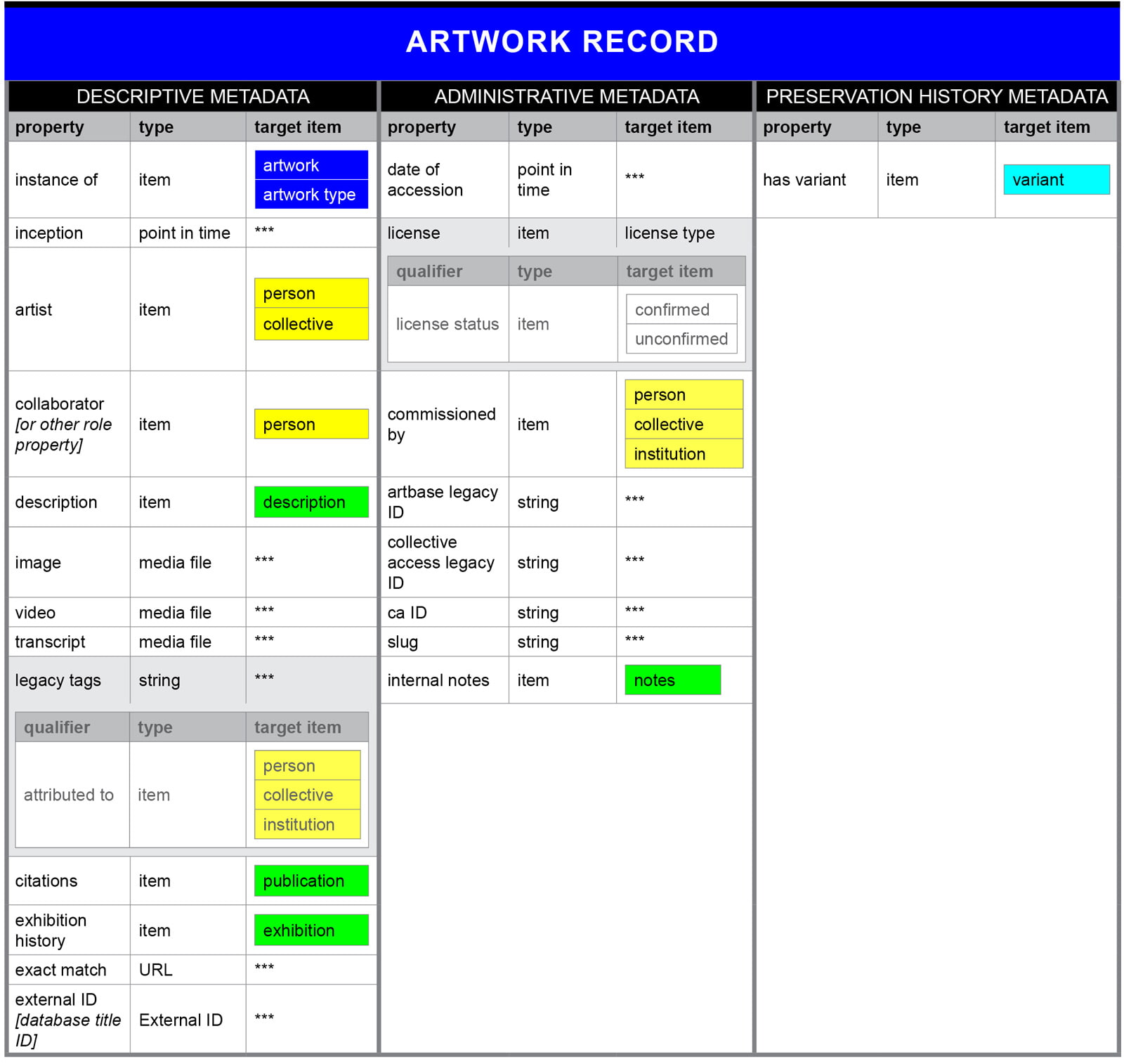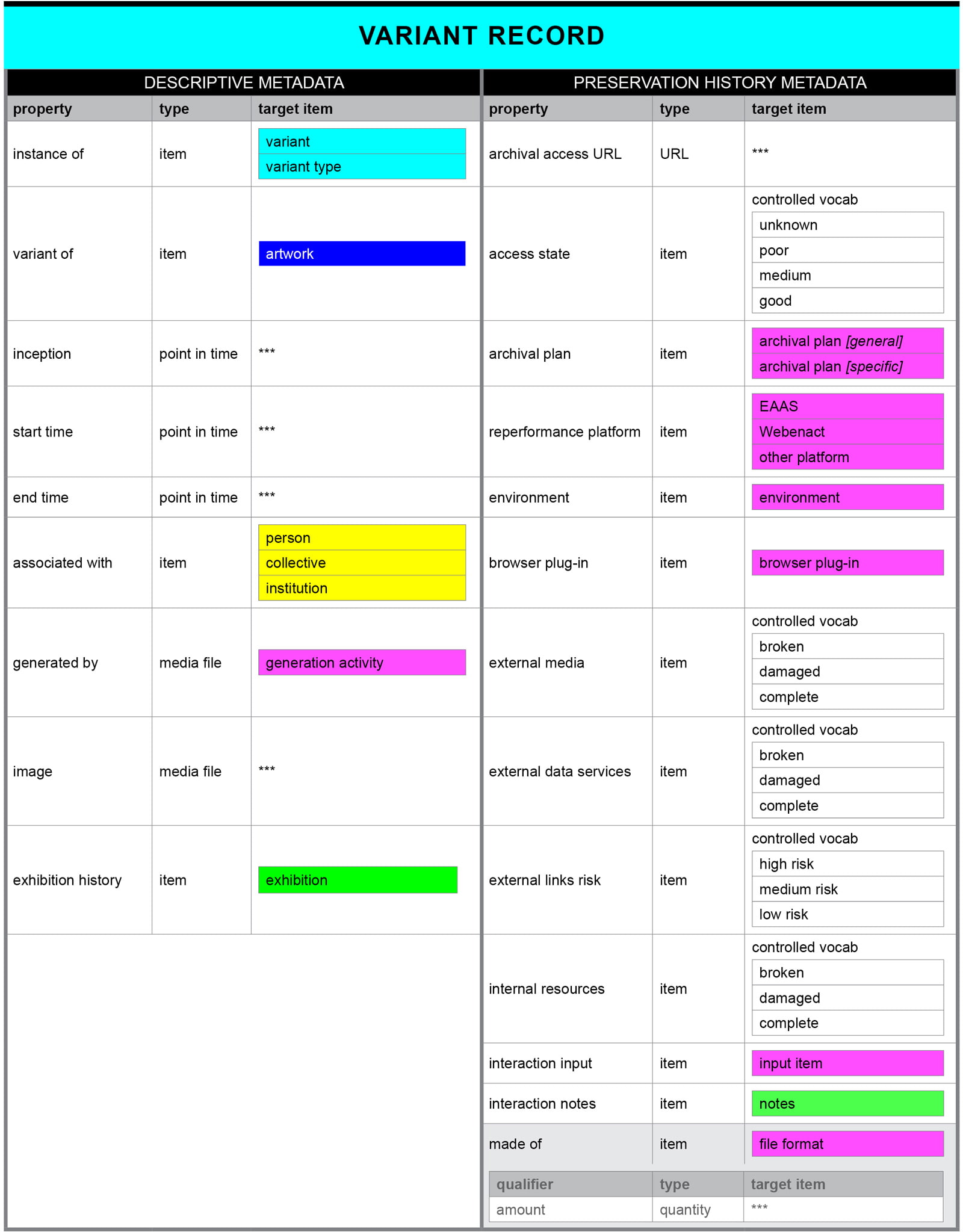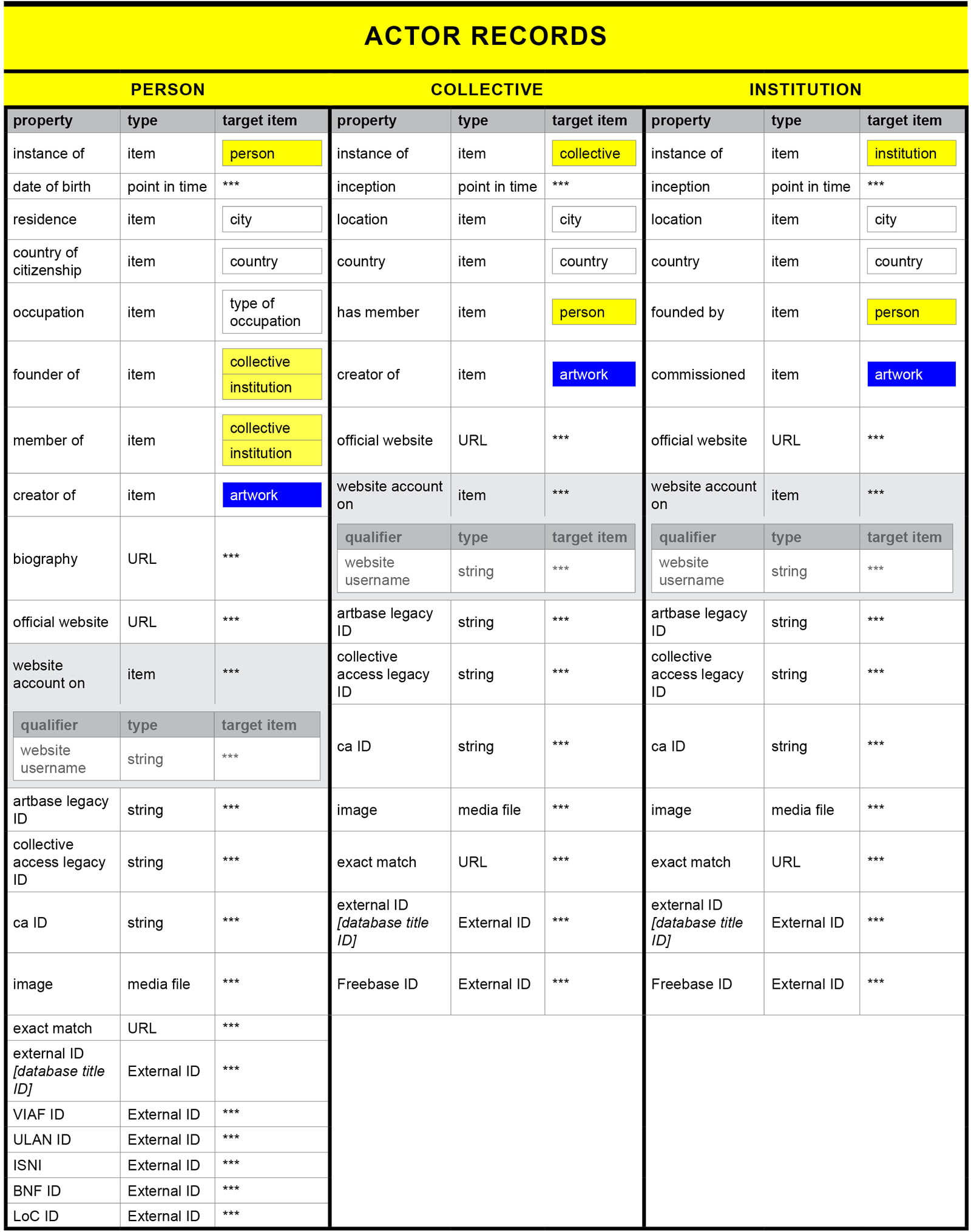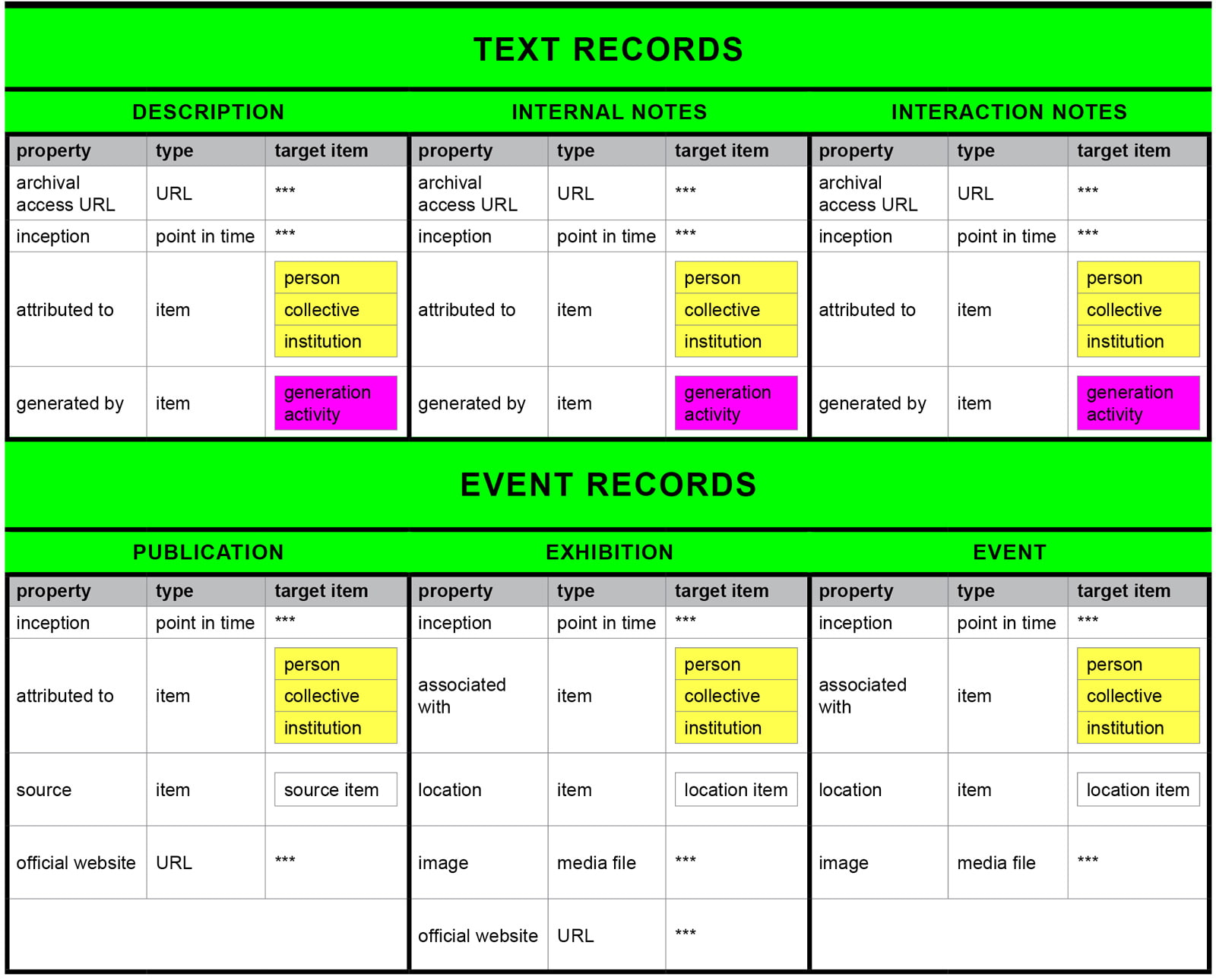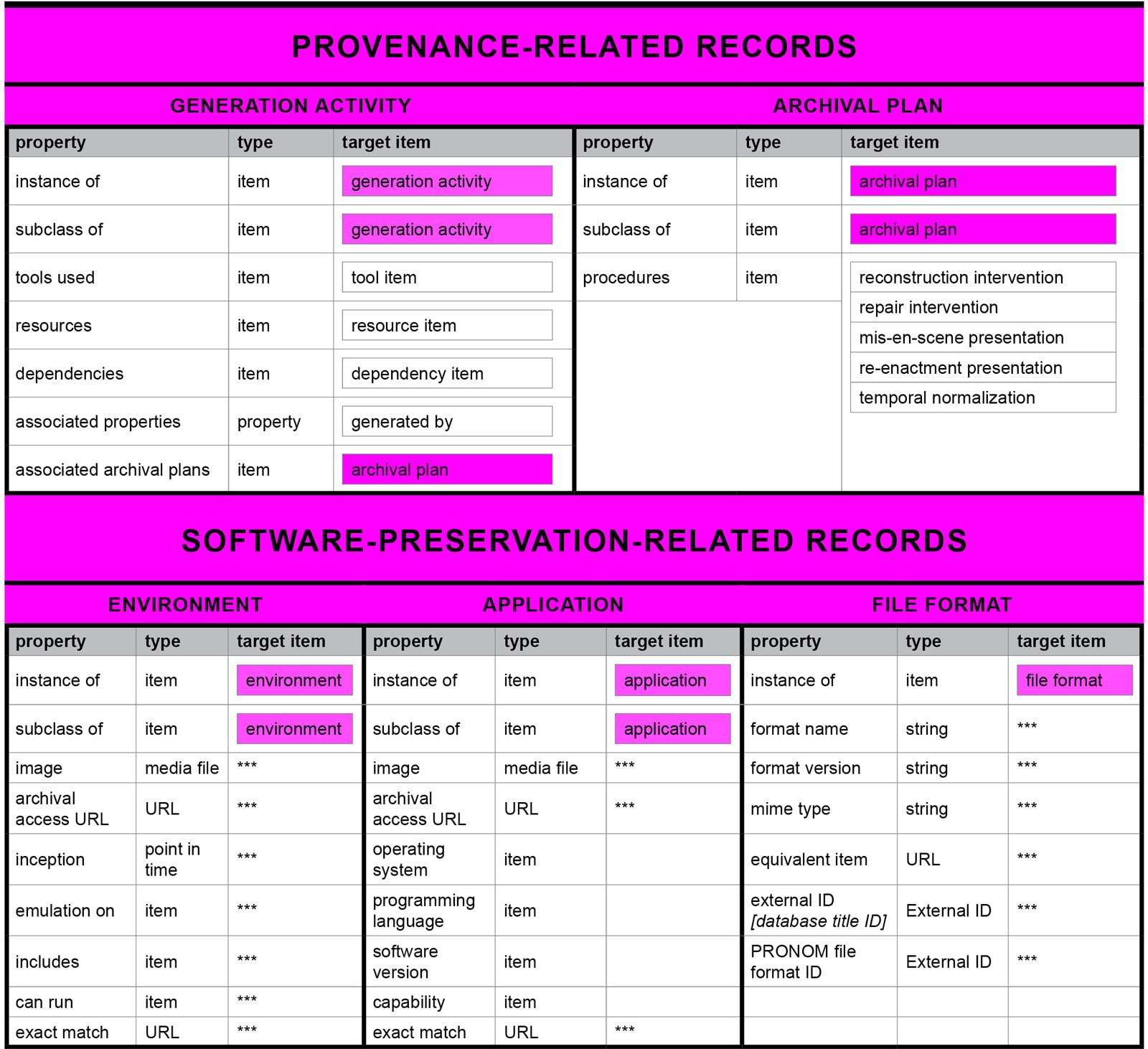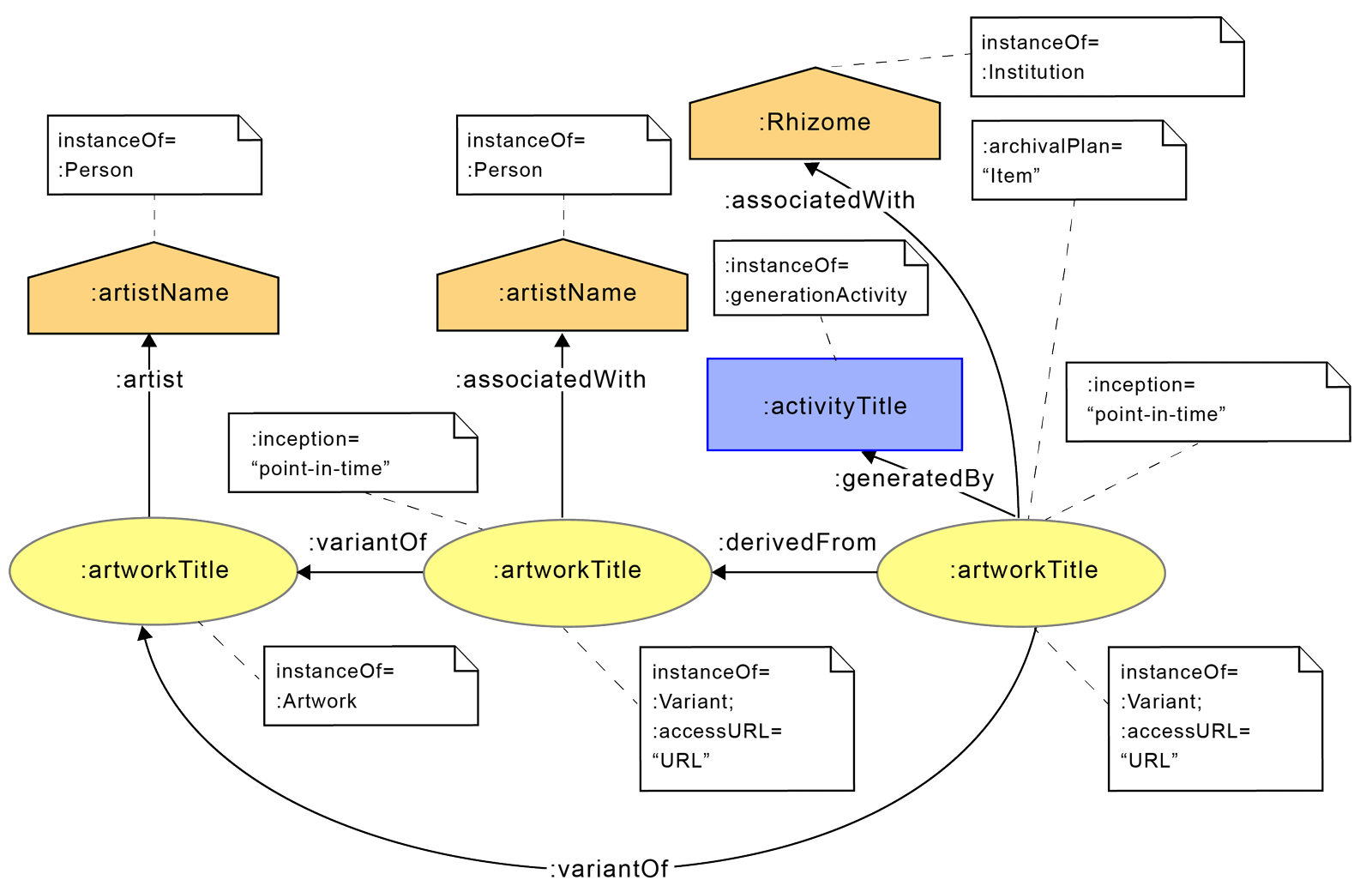ARTBASE REDESIGN DATA MODELS
Design Exploration and Specification Phases 2018–2019
Introduction
Net art resists the established metadata schemas and ontologies which focus overwhelmingly on the description of physical objects held within archives and museums. Following the move of ArtBase data to a linked data ecosystem (Wikibase), it was possible to rethink the entire metadata model for the archive. This new model carefully considers the processual, performative and networked characteristics of net art works whose material properties cannot be fully expressed within a few, limited descriptive metadata fields.
